Retro Review: Crossover
6 min readKira and Bashir accidentally enter the alternate universe visited by Kirk’s crew, where Terrans are slaves and Kira’s double is a tyrant.
Plot Summary: A plasma leak causes a difficult trip through the wormhole from the Gamma Quadrant, after which Kira and Bashir are escorted by Klingons to a space station now in orbit of Bajor. There, they realize that they have entered an alternate universe when Kira meets her double, the Intendant, who runs Terok Nor. The Intendant explains that after Captain Kirk crossed over and convinced her own universe’s Spock to disarm his empire, a Cardassian-Klingon alliance took over and helped Bajor overthrow its Terran enemies. Bashir is sent to mine ore under a vicious parallel Odo and tries to befriend O’Brien while Kira tries to find a way back to her own universe without enraging the Intendant, who treats humans like vermin. Kira asks Quark for help finding a transporter to duplicate Kirk’s crossover, but Quark is arrested for helping Terran slaves escape and confesses her plan to Garak, who has his own scheme to kill the Intendant and have Kira temporarily take her place. Meanwhile, Sisko arrives at the station, trading favors and sex with the Intendant for freedom from the mines. Kira approaches him for help and reveals Garak’s scheme but he insists that he’s no hero, though he clearly resents the Intendant. Sisko summons O’Brien – whom he calls Smiley – to repair his ship, interrupting Smiley’s work on a thorium leak which explodes, allowing Bashir to escape, killing Odo in the process. After Bashir tells Smiley that in his universe, O’Brien is a senior engineer, O’Brien agrees to help him escape if he can come too. The two are caught and the Intendant is about to execute them when Smiley’s confession that he wished for a universe with free, proud Terrans inspires Sisko to grab Garak’s weapon and rescue Kira, Bashir, and Smiley. The engineer goes with Sisko to fight for Terran freedom while Kira and Bashir are able to flee through the wormhole, still leaking thorium, which sends them back to their own universe.
Analysis: Love or hate what the writers have done with the alternate universe versions of our familiar characters, there’s no denying that “Crossover” is enormous fun. I know it’s often described as the dark or evil universe, but on Deep Space Nine in particular, I always think of the AU as the oversexed universe, though Archer and his crew got plenty of action there as well. The Intendant is all about sex, though she demands displays of love and loyalty as well; Garak is expected to praise and suck up to her though she’s perfectly aware that he loathes her, Sisko is expected to share her bed as well as whatever trinkets he finds for her, and Kira…well, as the Intendant says, if she can’t love her[self], who can? People respond to her like servants faced with unwanted attentions from royalty, with resignation and an eye to what they can get out of it, since consent is preferable to death. I’m just sorry we don’t get to find out what the Intendant makes Sisko do that gets him so disgusted with himself – this Sisko who has the loud belly laugh we’ve never heard from DS9’s commander, who doesn’t have a son, who isn’t mourning the loss of a wife in battle with the Borg. He’s the lawless, self-motivated Sisko whom Cal Hudson tried to wish into being in The Maquis. Kira seems more astonished than frustrated when she realizes he isn’t going to play the hero for her or anyone else; that surprises her more than finding Quark to be sensitive or Odo a vicious parody of himself, citing Rules of Obedience and calling for a brutal sort of justice for the Terrans he despises more than the swaggering Klingons do.
In many ways, “Crossover” is closer in spirit to the original Star Trek than any of its sequel series. Finally, we’re back to Klingons who kill humans for sport! McCoy, Scotty and Spock seem like aged, faded versions of themselves in the Next Generation stories in which they appear, but though he never appears on DS9, Kirk is a living, vibrant presence in this alternate universe where everyone has heard of him and how he called upon a Vulcan to summon the future. How ironic that in this universe, Spock has turned out to be “The City on the Edge of Forever”‘s Edith Keeler – right about peace, but at the wrong time, allowing the Klingons and Cardassians to take over the quadrant. It’s a tragedy, yet I can’t help be filled with glee that although Kira Nerys has never heard of Captain James T. Kirk, the Intendant gives him the name recognition he deserves and all transporters in the Alliance have been specially equipped to make sure no one can cross over the way Kirk did. It’s so much fun to hear Kirk spoken of with such resentful reverence, recalling all the perverse humor of the original “Mirror, Mirror.” Remember how much fun it was to see Sulu come on to Uhura and Uhura turn him aside at knife-point right in front of everyone, even if the implications should have been disturbing? To learn that Kirk had a concubine, even if that should have been appalling? Even Spock’s forced mind-meld, played as a brutal mental rape when the real Spock did it to Valeris in Star Trek VI, could be forgiven when bearded Spock did it to McCoy, since we wanted him to track down Kirk so we could hear what sort of speech Kirk would make before departing. And oh, what a speech! Its impact apparently had greater impact on this universe than the sacred text of E Plebnista did back home.
What’s best about “Mirror, Mirror” though is that under the fun of seeing all that bad behavior, there are serious scientific and metaphysical questions. What if you had an exact duplicate in a different, darker universe – could you appeal to your own best qualities or would you be stymied even about how best to manipulate yourself? Are some friendships so inevitable that they’ll develop no matter how altered the circumstances? The nature-nurture argument comes into play as Kira appeals to the Intendant to help her inspire a stronger Bajor and as Bashir tries to persuade Smiley that he could be so much more than he is, but there’s also a curious balance of fate and free will, with all these people ending up in the same part of space yet finding such different fates. (I’m betting that if the producers had any notions of sequels in mind, they wouldn’t have killed off Odo so quickly.) I have occasionally met people who disliked the crossover episodes on the basis of inconsistencies with earlier Trek incarnations and concern about violations of both the Prime Directive and the laws of conservation of matter – could Kira really have met her double without blowing up the universes like Lazarus nearly did in “The Alternative Factor,” could Bashir have brought Smiley back without Starfleet having an institutional coronary – but I think such nitpicking is missing the point of the adventure. Even as a captive in a brutal, bloody universe where his best friend threatened to kill him, Kirk managed to have fun. I have to believe that when she got back, once she shook off the trauma of having a version of herself try to seduce her, Kira must have had some good times imagining what might have been had she been born into the Intendant’s life.
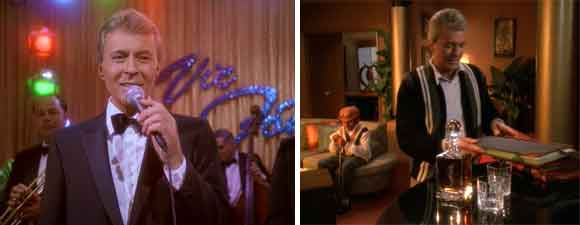
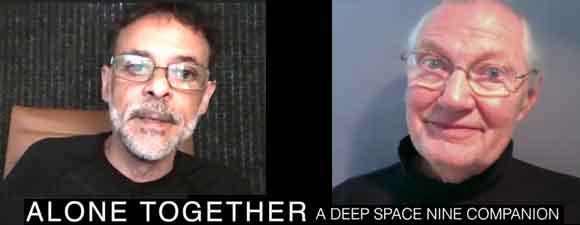

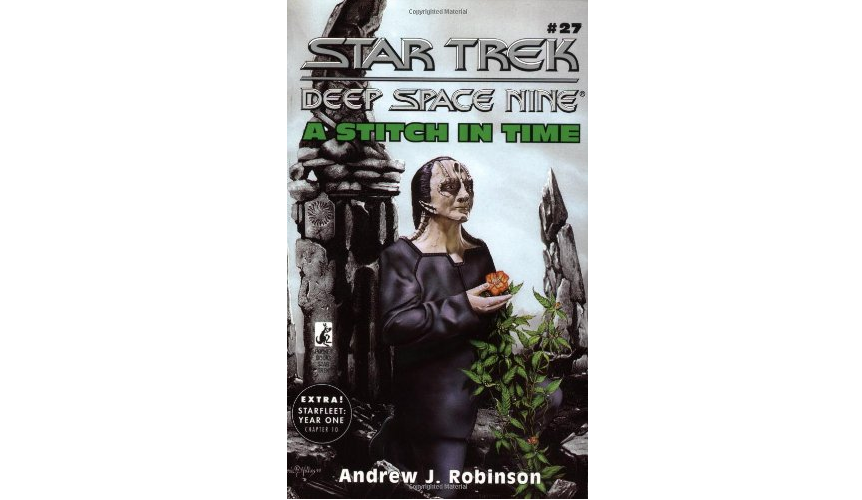

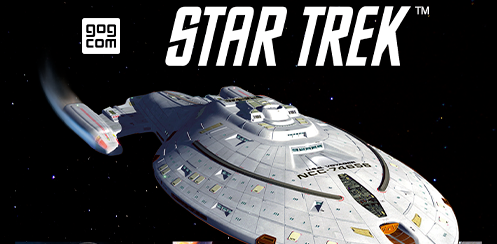
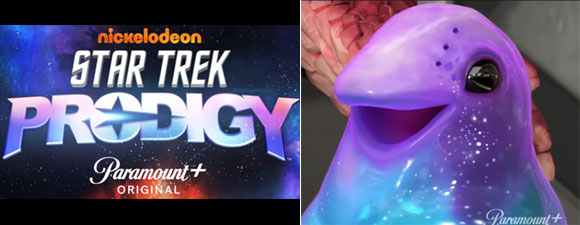
“I have to believe that when she got back, once she shook off the trauma of having a version of herself try to seduce her, Kira must have had some good times imagining what might have been had she been born into the Intendant’s life.”
This I really doubt. Kira always seemed to be ashamed and afraid of her darker impulses. If she imagined the Intendant’s life at all, it would have been with disgust.
Complete agreement here, Geiger. The picture of Kira changes over the seven years but one thing is consistent: she always wants to do the right thing (whether she always succeeds is a completely differently question). She is truly a self-sacrificing character (indeed, one of the interesting sub-threads in DS9 is Kira trying to learn to do things for herself… crops up in Kira/Odo all the time). At best, she might wonder how her alternative self became the Intendant – i can’t imagine Kiva ever wanting to be like her, even secretly
Crossover is also draped one thing about DS9 that non-Niners inevitably miss: that almost brutal sense of humour the writers had. The show has been cast – some might say dismissed – as Star Trek’s one drama; but it was a drama with a natural – albeit often jokeless – counterpoint of comedy running all the way through it. This episode has that humour soaring far beyond the stars. Many of the writers seem to have loved TOS – Moore & Echevarria most famously – but here, they’re having the time of their life skewering its reassuring moralities by simply showing what might happen after one of Kirk’s high-minded interventions. Absolutely delicious
David Livingston’s direction – & art-direction – should also be noted. His Empok Nor is a spectacular recreation of the DS9 standing sets. By this stage, DS9 was finding its off-centre range regularly; & becoming the show Niners still adore
I could agree with this. I’m betting she saw a little of Gul Dukat in her counterpart considering she displayed many similar attributes to him; the charm, the seductiveness, the need to have comfort men around her (to his desire for comfort women). I wonder how they would have portrayed the alternate Dukat, though. If he were exactly the same, then there would have been no need for him to appear after all. Perhaps evil Kira killed him to gain the position of Terok Nor’s Intendant.
Crossover was a fun episode, and one of the best of the DS9 mirror universe episodes. I remember how much I looked forward to this one when it was first going to be on, because I’m a gigantic fan of TOS, and how much I loved it. It completely hit all the right notes.
Eventually I really grew to dislike the DS9 mirror universe “saga” but the first few installments were great fun. Later on, they seemed a bit too over-the-top for me, and I just got tired of the storyline. They felt like a distraction once the ongoing Dominion storyline in the “main” universe got really, really good in the final seasons.
It’s also worth noting that David Mack did some follow-on novels about the mirror universe that I haven’t gotten a chance to read yet, but I want to because I love the concept. Basically, the idea is that mirror Spock knew exactly what he was doing, and that he was guiding the mirror universe toward a particular end-state, Hari Seldon-style (Foundation). As a big Spock fan, I love the idea that mirror Spock would have the last laugh; it always kind of rubbed me the wrong way on some level that mirror Spock would ultimately be a failure. (My chat avatar for almost a decade now has been an image of mirror Spock; I’ve always been a fan of Spock in general, but also the Mirror, Mirror episode.)
Agreed about DS9’s sense of humor.
TNG had some very funny episodes. (I’ve always thought Brent Spiner was hysterically funny, and a few of the Q episodes were wonderful comedies.) And I always get a huge laugh out of The Trouble with Tribbles.
But overall I think DS9 was the series with the best sense of humor, despite (or maybe because of) the perception that it was the “dark” Trek. Trek comedy can often be very heavy-handed and forced. But DS9 often came across as more “naturally” funny, if that makes any sense at all. Or maybe I just like dark humor. 😉
It makes sense, Bobby, because DS9 was funny without generally relying on the obvious set-piece joke. More like Frasier than Cheers, the humour in the show was built around asides, often snide, & not uncommonly aimed at the Niners directly
(Just saw The Way of the Warrior again. Drex’s line to Morn – What is it that you DO on this station? – doesn’t just smash the fourth wall to the audience, it does the funky gibbon all over the wreckage it leaves behind)
Everyone on that station was snarky about something; & characters like Odo & Quark & Garak & Worf seemed to have been given carte blanche to be snarky about absolutely everything. Made for great dialogue, especially with these great actors to back them up
There was also a healthy dose of physical humour – how many times did O’Brien appear butt-first from under a console in Ops? – but what was really odd was the love of bizaare in-jokes – some so in that only a fanatical Niner could hope to pick them up. Why on Bajor did the writers decide to echo the four-shift rotation meme from Starship Down (where its used rather touchingly to advance the Sisko/Kira relationship) in Acession (where it’s used as a lead-in to the brief severing of this relationship)? Because they could; & because they gave the viewers credit for being able to keep up
I miss the show’s arrogance
Mind rape…good grief.
Yes, clearly interrogation was the model, not rape—especially since the example she referred to involving Valeris was obviously highly unpleasant for Spock as well. But MEG has never been one to let the truth get in the way of her female-victimization narratives.
Speaking of odd in jokes, recall that bajoran wall decoration that is the Botany Bay spun 360 and repeated round the middle? Whacky nonsense, but fun. Best trek series for so many reasons. I want it in hd now!
Reasonable point. However it seems clear to me that some meld stories are depicting more than interrogation and invite or demand shades of rape. A forced and violent intrusion that traumatizes the victim, steals personal dignity and hurts emotionally… Clearly “mind rape” has been on a few minds in some scenes, whether from script or director or actor or what have you. Take that into consideration or you are missing a level of intended complexity in some scenes. I find it deeply disturbing yet fictionally fascinating. Such ugliness associated with the now-peaceful Vulcan race is unsettling to say the least.
I don’t actually; but i’ll keep an eye for it. Do you know what episode?
(I still have trouble with the idea that Morn created so many of the station’s the wall paintings)
Oddly (& as stated elsewhere), i’m not waiting or budgetting for any future HD DS9 set. The films are fine as they are; & i don’t need any visual tinkering to make them better. If Michael Dorn carries out on his threat to create a Worf film i’ll support it on a crowdfund site (as i did with RUR, Space Command, etc). HD DS9 – nup
Get over yourself.
Many eps show the circular golden prop made of a repeating 2d image of the Botony Bay. The clearly visible ship shape is the top of the spiral and unmistakable. Always in shrines and places of worship, Kira’s place…
I don’t need any DS9 remakings for hd, but the simple ability to see the station inside and out in hd is exciting to me.
A Dorn movie? Seriously? Sounds unlikely…
Mr Dorn has discussed this film – & his Through the Fire project – for some time. Apparently a script has been written but how advanced beyond that the film is, i no knot
Like many people with film interests beyond loud, bland over-priced comic strips, he seems curious about the potential of crowd-funding & is considering funding it that way. Whether he can work his way through the twin politics of Trek & crowd-funding only the future will tell but he’s a thoughtful creative figure with at least one successful crowdfunded film in his palmares (Liberator – & yes, i did)
What he’s described has a been straight-to-digital title – essentially, a professional fan-style film. Not a film for anyone waiting with bated breath for ST XII therefore but something i’d certainly get in on it if turned up on Kickstarter et al. Then again, i’d back anything which looked curious & preferably literate. CGI explosions not required
(… & in case anyone here has the idea that too many people have had already: don’t read my love of good SF films as an excuse to send me your cheap zombie film & demand that i back it. You ain’t George A Romero & i won’t. I might even be rude about you & your project)
Michael Dorn (@akaworf on twitter) has just placed a film on Kickstarter. It isn’t the Worf film but a drama involving a number of TNG & DS9 actors & yes – i’m already on-board. I hope Trektoday promotes this ambitious project – i’m guessing Through the Fire will be the talk of Vegas Khan! – but in the light of the policies of this site, won’t direct link to it here
The concept “mind rape” has been a common plot device in the Trek universe. It doesn’t necessarily have to refer to forcing oneself on another sexually. It is still a gross violation of the person that is highly traumatizing on the subject. And while on the subject, I’m not aware of this level of outrage over Rick Berman classifying what the Borg did to Picard as rape. And from a male perspective, I still found it cringe-worthy that Riker’s and Beverly’s experiences in “Violations” took a back seat to once again portraying Counselor Troi as a helpless victim and damsel in distress. Tell me where I’m wrong on all counts, GUEST.